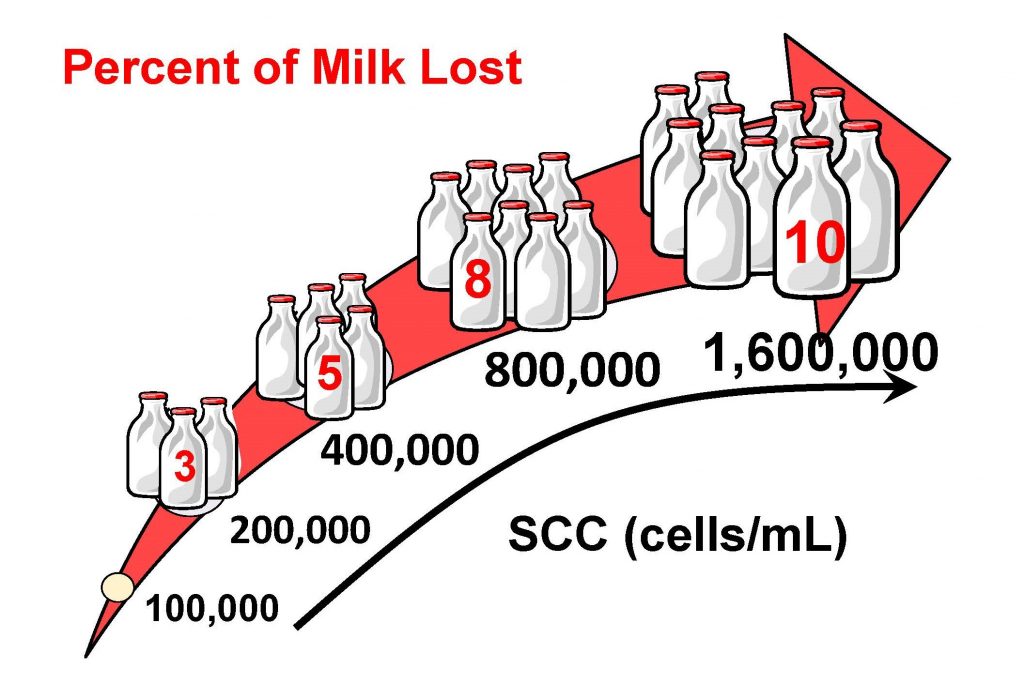Dr. Derek T. Nolan, Assistant Teaching Professor, Department of Animal Sciences, University of Illinois
June, 2020
Mastitis is one of the costliest diseases in the dairy industry. Estimates suggest that mastitis costs the US dairy industry $2 billion per year. This figure only considers the total cost of confirmed mastitis cases; it does not represent money spent on mastitis prevention. The following equation should be used to calculate the total cost of any disease on farm:
C = L + E
Where:
C = Total cost
L = Losses
E = Expenses
Losses can also be considered failure costs. Failure costs are any costs associated with the occurrence of the disease. When evaluating the cost of mastitis, the associated failure costs consist of two major categories:
- Direct Costs – Costs that can be measured
- Treatment
- Discarded milk due to antibiotic treatment or milk abnormalities
- Culling costs (though culling costs can be misleading because the potential income from the cow’s replacement must also be considered)
- Labor costs associated with treatment and additional cow care
- Hidden Costs – Costs whose direct effect is not seen
- Cost of lost milk production – Cows with a certain somatic cell count or clinical mastitis are not reaching their milk production potential.
- Cost of lost reproductive efficiency – Cows with clinical and subclinical mastitis early in lactation tend to have higher days open.

Expenses are costs associated with the prevention of disease. All of the daily management practices that are used to prevent disease should be considered. The labor costs associated with those practices, which are often overlooked, need to be considered when making management decisions as well.
These same parts of the equation can be used to determine whether the adoption of new management practices will pay off. Often new management practices are adopted to lower the incidence of a disease on the farm. However, if the incidence rate of the disease is already low, there may be no economic benefit to the management practice. The two following questions should be used to determine if a new management practice is economically beneficial.
- How will the implementation of the management practice change my losses (failure costs) associated with the disease?
- Measure disease incidence before and after adoption
- Estimate all the costs (direct and hidden) associated with the disease
- What are the total expenses related to the implementation of the management practice?
- Calculate total expenses across the herd or part of the herd depending on the management practice
- Estimate the labor cost associated with the management practice
Management practices should be adopted when their implementation lowers the failure costs of the disease more than the cost of the application. Practices are economically feasible when a dollar spent returns at least a dollar in decreased failure cost. By estimating the failure costs associated with a disease and the expenses of a new management practice, a better-informed decision can be made.

